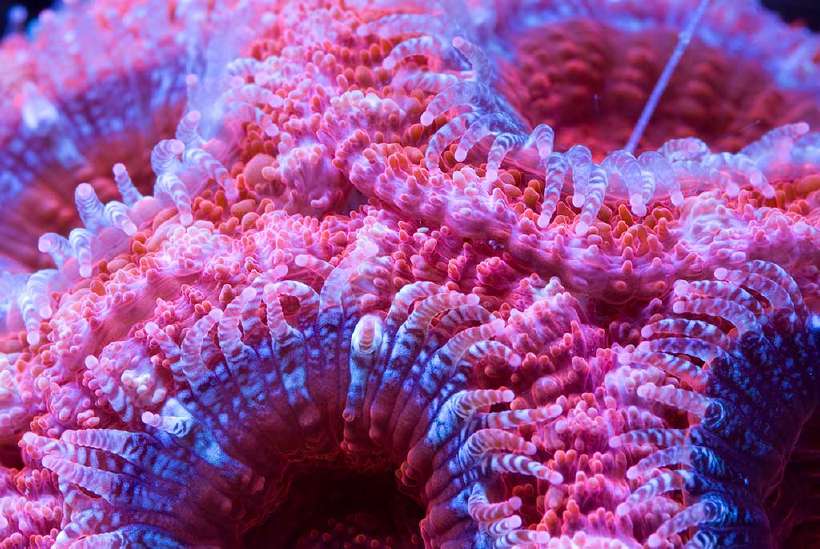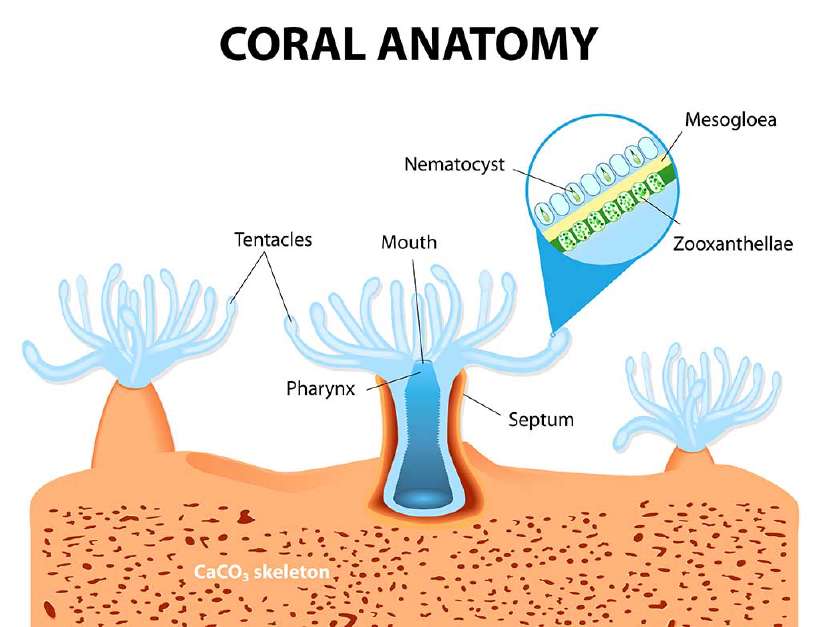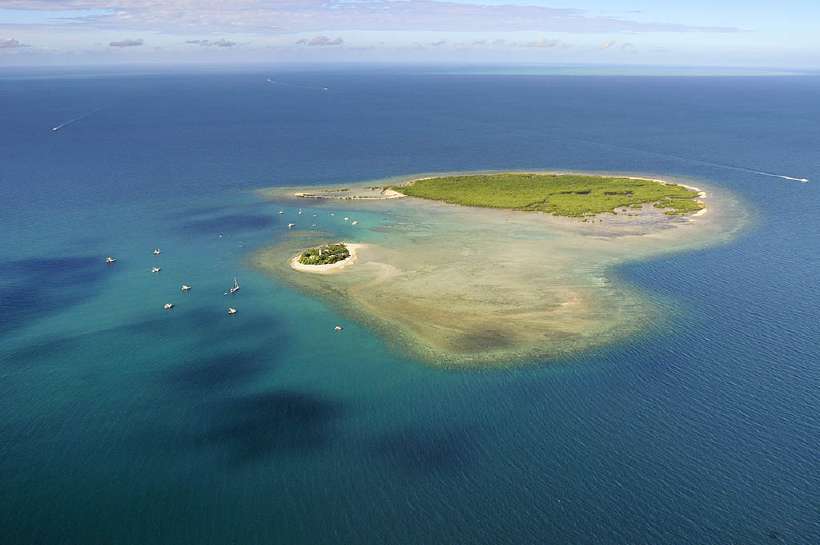An Organism that is visible from Space
Home / Science for Kids / Planet Earth for Kids / An Organism that is visible from Space
The elephant is the largest land animal. The Blue whale is the largest sea animal. But however big these animals may be, they can not size up to the colonies built by tiny little sea creatures – the coral. The colonies built by corals are called coral reefs. Coral reefs can be as huge as big islands or even as big as a country!
These reef-building corals are not single animals. A coral is a colony made up of many individual animals called polyps. These are connected to each other.

A polyp has a hollow, cylindrical structure. It is attached with its lower end to some surface like a rock or the shallow seabed. At the free end is a mouth that is surrounded by tentacles. The tentacles are used to gather food. They are armed with specialised stinging structures, called nematocysts.
Polyp: the colony builder

When a polyp dies, it leaves behind its skeleton, which is made of a form of calcium carbonate called aragonite. The skeletons are the bricks by which coral reefs are built.
Over thousands of years, corals keep depositing their skeletons and newer corals thrive among the skeletons of their predecessors. These in turn form massive colonies, which combine to form a reef.
The Great Barrier reef to the north of Australia is probably the most famous of them all. Remarkably, it is the only living organism that can be seen from outer space.

The Great Barrier Reef is one of the planet’s 552 world heritage areas. It is larger than the United Kingdom and longer than the western coast of the United States of America.
Because the reef is formed in shallow water, a large amount of sunlight penetrates through it. This is why it is a haven for other sea creatures.
The Great Barrier Reef contains at least 1500 species of fish, 350 types of coral and 4000 varieties of molluscs. New species are being discovered every year. Six of the world’s seven species of marine turtle live in the Barrier Reef.
However, the reef is in danger today. Partly due to the rise in sea temperature and the subsequent rise in sea levels, and partially because of pollution and fishing activities in the region.
413 words |
4 minutes
Readability:
Grade 7 (12-13 year old children)
Based on Flesch–Kincaid readability scores
Filed under: planet earth
Tags: #australia, #colony, #skeletons, #colonies, #tentacles
You may also be interested in these:
Paris is Bugged by Termites!
The Tiny World of Ants
What's for Dinner!
An Octopus as Jar-opener
Appearances are Deceptive